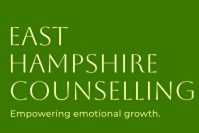Living from the Inside Out: Bridging the Gap Between Who We Are and How We Appear
A therapeutic reflection from East Hampshire Counselling on aligning our inner and outer selves for greater peace and authenticity
At East Hampshire Counselling, we often meet people who feel as though they're living two lives. On the surface, things may appear fine—they're functioning, they're meeting expectations, and they're keeping it together. But underneath, there's a quieter, more complex story: a longing to feel more real, more seen, and more aligned with who they truly are.
This experience—the tension between our inner self and the version of us we present to the world—is deeply human. We all carry internal truths: emotions we don't voice, values we don't always express, dreams we quietly tuck away. And often, these don't quite match the roles we play or the way others perceive us.
This blog explores the space between those two selves—and what it might mean to bring them closer together in a gentle, compassionate way.
Understanding the Inner and Outer Self
Your inner self is the part of you that only you truly know. It holds your thoughts, emotions, memories, hopes, and values. It's the part you meet in stillness—whether through reflection, creative expression, or quiet honesty. It's the "you" behind closed doors, unfiltered and often unspoken.
Your outer self is how you move through the world—your appearance, your behaviours, the roles you adopt, and the way you present yourself to others. It's shaped by culture, upbringing, expectations, and a natural desire to belong and be accepted.
Neither self is more real than the other—but when the distance between them grows too wide, it can become difficult to feel truly at home in yourself.
The Disconnect
At East Hampshire Counselling, clients often describe feeling like they're "going through the motions," or "wearing a mask." Maybe they're being the reliable one, the successful one, the agreeable one—roles that once served a purpose but now feel stifling or untrue.
Sometimes the disconnect happens slowly, shaped by years of adapting to what others needed or expected. Other times, it comes on sharply—after a life event, a crisis, or a moment of deep introspection.
When who we are inside doesn't align with how we live on the outside, we can feel fragmented, tired, or unsure of who we really are.
What Misalignment Can Do
Misalignment between the inner and outer self can show up as:
- Chronic stress or anxiety
- A sense of numbness or emotional flatness
- Feeling unseen or misunderstood in relationships
- Questioning life choices that once seemed right
You might find yourself thinking, "I should be happy—so why don't I feel that way?"
But the good news is that this discomfort isn't a sign that something is wrong with you—it's a sign that something in you is seeking to be known and lived more fully.
How We Begin to Reconnect
Therapy offers a safe space to explore these inner and outer layers—without judgment or pressure. Often, the work starts by simply noticing. When do you feel most like yourself? When do you feel furthest away?
At East Hampshire Counselling, we encourage small, meaningful steps toward alignment:
- Journaling honestly without editing yourself
- Naming and accepting feelings rather than burying them
- Speaking your truth gently, even when it feels risky
- Letting go of roles that no longer serve you
This isn't about being the same person in every situation—it's about gradually building a life that feels congruent, where your inner truth informs your outward choices.
Closing Thoughts
The journey of aligning your inner and outer self isn't linear, and it doesn't require dramatic change. Often, it's about softening into who you really are, and letting that be enough.
At East Hampshire Counselling, we believe that when we live from the inside out, we move through life with greater ease, connection, and self-trust. If this resonates with you, we'd be honoured to walk alongside you as you explore what alignment might look like in your own life.
